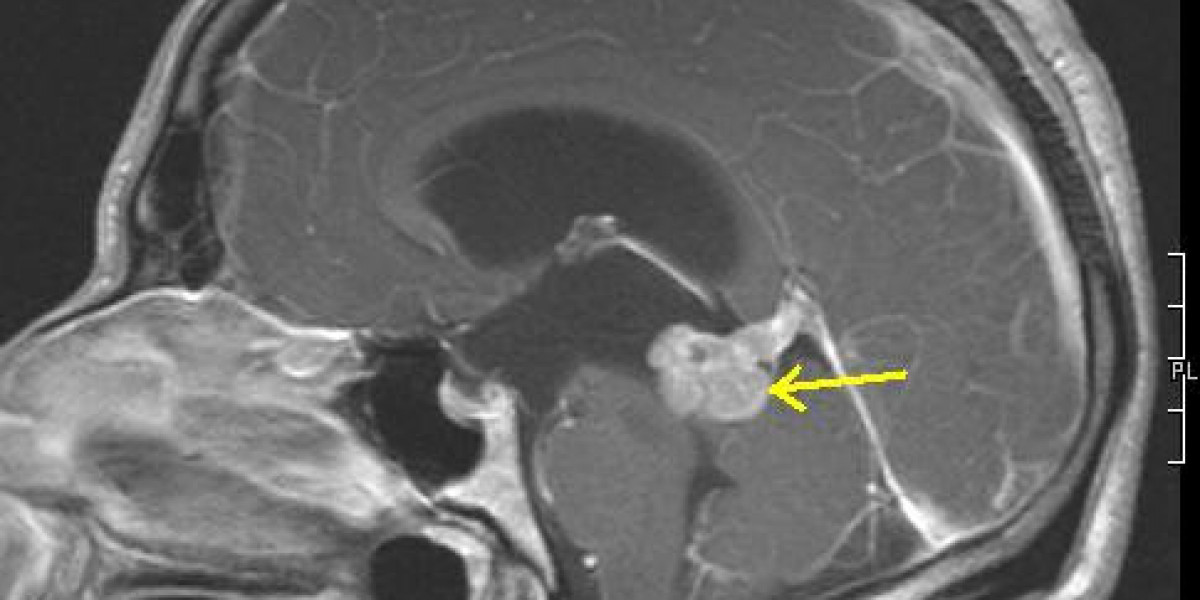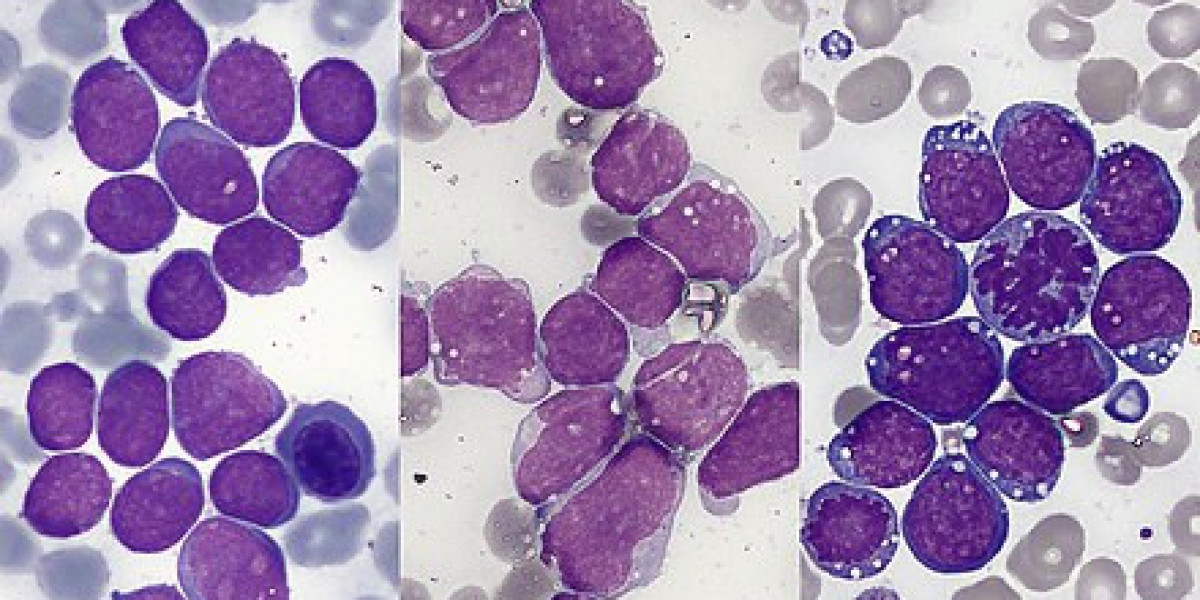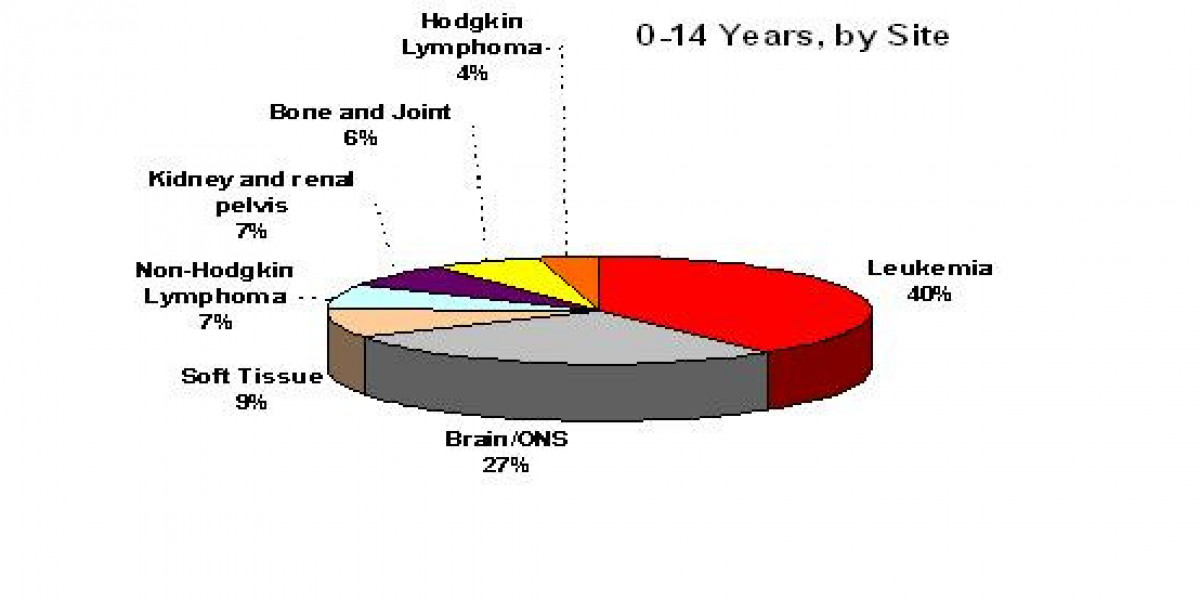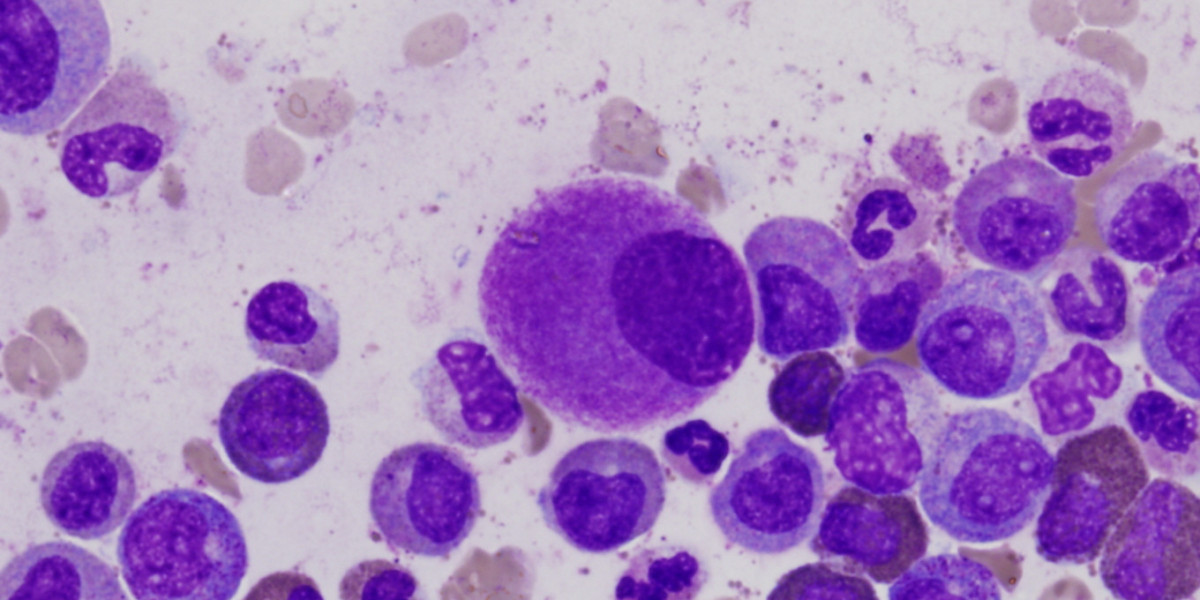Posted by: Skin And Cancer Institute in Medical Dermatology

Yes, we’ve found that diet and lifestyle modifications considerably enhance non-surgical treatment outcomes. Combined dietary approaches like Mediterranean patterns with targeted protein intake (1.2-1.6g/kg body weight) and structured exercise protocols (150-300 minutes weekly) yield superior results compared to treatments alone. Strategic interventions including time-restricted eating, anti-inflammatory foods, and stress management through mindfulness practices create synergistic effects that amplify therapeutic benefits. Understanding these evidence-based combinations reveals how to optimize your treatment success.
Key Takeaways
- Combined dietary modifications and non-surgical interventions yield significantly greater treatment outcomes than either approach alone.
- Mediterranean diet with strategic protein intake enhances healing while reducing cardiovascular disease risk by 25%.
- Regular exercise (150-300 minutes weekly) reduces pro-inflammatory cytokines and improves pain reduction alongside non-surgical therapy.
- Anti-inflammatory diets improve periodontal treatment effectiveness and enhance metabolic pathways when combined with interventions.
- Stress management and social support systems significantly improve dietary adherence and long-term treatment success rates.
The Synergistic Power of Combined Diet and Non-Surgical Therapy

While standalone dietary modifications or isolated non-surgical interventions can yield modest improvements, we’ve observed that their combined application creates a powerful synergy that greatly amplifies treatment outcomes across multiple health conditions. This dietary synergy occurs through complementary mechanisms that address both systemic inflammation and metabolic optimization simultaneously.
When we implement time-restricted eating alongside low-glycemic protocols, these approaches synchronize metabolic pathways with pharmacological interventions, creating enhanced therapeutic outcomes. We’ve documented that semaglutide combined with structured diet and exercise programs produces weight reduction far beyond what dietary changes achieve alone. Similarly, our patients receiving behavioral therapy targeting emotional eating patterns experience remarkably better results when paired with anti-inflammatory dietary strategies that reduce treatment resistance markers.
The application of anti-inflammatory diets rich in vitamin C, antioxidants, and omega-3 fatty acids has demonstrated measurable enhancement in periodontal treatment effectiveness when combined with non-surgical therapy.
Evidence-Based Dietary Approaches That Drive Real Results
At our practice, we’ve observed that evidence-based dietary interventions form the foundation of successful non-surgical treatment outcomes. The Mediterranean diet consistently demonstrates superior results for metabolic health markers, while strategic protein intake above 20% of total calories preserves lean muscle mass during weight reduction phases. We implement controlled caloric restriction protocols that maximize fat loss while maintaining nutritional adequacy, ensuring our patients achieve sustainable metabolic improvements. Our approach targets a 7-10% weight reduction to optimize liver health outcomes and metabolic dysfunction reversal.
Mediterranean Diet Benefits
Although numerous dietary patterns claim health benefits, the Mediterranean diet stands as one of the most rigorously studied nutritional approaches, with decades of research demonstrating measurable improvements across cardiovascular, metabolic, and neurological health markers. When we examine the Mediterranean benefits, we find compelling evidence: a 25% reduction in cardiovascular disease risk, 23% lower all-cause mortality in older adults, and significant improvements in type 2 diabetes management. The diet’s emphasis on dietary antioxidants from olive oil, nuts, and vegetables provides powerful anti-inflammatory effects that support skin health and healing. The Mediterranean diet’s mechanisms include lipid-lowering effects, protection against oxidative stress, anti-inflammatory properties, and inhibition of platelet aggregation. Studies show a 23% reduced dementia risk and lower cancer incidence, making this approach particularly valuable for patients seeking extensive wellness alongside their dermatological treatments.
Protein Preserves Muscle
When we examine protein’s role in muscle preservation, we find that ideal intake levels of 1.2–1.6 grams per kilogram of body weight daily create measurable improvements in lean body mass retention and functional strength. This targeted protein intake activates the mTOR pathway, driving muscle protein synthesis while combating age-related anabolic resistance that naturally diminishes our muscle-building capacity.
We’ve observed remarkable results when patients distribute 20–30 grams of high-quality protein across each meal, optimizing synthesis responses throughout the day. Research documents significant gains—21.46 kg increases in handgrip strength and enhanced knee flexion performance in higher protein groups. When we combine adequate protein intake with resistance training, muscle preservation becomes even more pronounced, with MRI-documented increases in muscle cross-sectional area and reduced intermuscular fat infiltration supporting both aesthetic and functional outcomes.
Higher protein intake also delivers substantial improvements in body composition, with studies showing fat mass reduction of 2.96kg in moderately high-protein groups compared to 1.28kg in normal protein groups over 12 weeks.
Caloric Restriction Works
Since moderate calorie restriction delivers measurable anti-aging benefits without the extreme deprivation many associate with dietary interventions, we’ve witnessed remarkable transformations in patients who maintain sustainable 12-14% reductions in daily intake. The CALERIE trial demonstrated that caloric reduction benefits extend beyond weight loss to enhanced mitochondrial efficiency and reduced inflammatory markers throughout muscle tissue.
We’re particularly excited about the molecular mechanisms driving these results. Calorie restriction activates specific metabolic pathways, including upregulation of energy-generating genes and optimization of cellular repair processes. The identification of the Landin gene offers promising therapeutic targets that could amplify restriction benefits while supporting immune resilience. Additionally, calorie restriction promotes greater functional volume in thymus glands while reducing fatty infiltration that typically compromises immune cell production. Our patients experience delayed biological aging, improved cardiovascular health, and enhanced muscle function—proving that moderate, sustained restriction creates lasting improvements in overall wellness and treatment outcomes.
Exercise Recommendations for Enhanced Treatment Outcomes
We’ve established that dietary interventions form the foundation of non-surgical treatment success, but exercise protocols serve as equally critical metabolic catalysts that amplify therapeutic outcomes. Our clinical experience shows that moderate-intensity exercise guidelines—150-300 minutes weekly of aerobic activity combined with twice-weekly strength training—create measurable improvements in pain reduction and functional capacity that match pharmaceutical interventions. When we implement structured exercise protocols alongside nutritional strategies, we’re able to achieve sustained treatment benefits that extend well beyond the typical 6-week intervention period, with patient adherence rates markedly improving through individualized, multimodal approaches. These individualized interventions are essential since slowly progressed physical activity treatments that consider both physical limitations and psychosocial needs consistently demonstrate the highest success rates in chronic pain management.
Moderate Exercise Guidelines
While many patients focus solely on topical treatments and medications for their dermatological conditions, we’ve found that incorporating structured exercise protocols can markedly enhance therapeutic outcomes and reduce systemic inflammation that often underlies chronic skin disorders.
Our moderate intensity recommendations center on 150-300 minutes weekly, as this threshold optimizes anti-inflammatory benefits without triggering excessive cortisol responses that can worsen skin conditions. We’ve observed that frequency guidelines of 2-3 sessions per week provide consistent results while allowing adequate recovery between workouts.
The beauty lies in exercise’s dual action—improving circulation enhances nutrient delivery to healing tissues while reducing inflammatory markers like C-reactive protein. We encourage combining aerobic activities with gentle resistance training, creating synergistic effects that support your skin’s natural repair mechanisms alongside our prescribed treatments. Research demonstrates that exceeding the recommended exercise guidelines provides even greater mortality risk reduction, suggesting that patients who can safely increase their activity levels may experience enhanced therapeutic benefits.
Metabolic Health Benefits
Although exercise’s cardiovascular benefits are well-documented, we’ve discovered that its metabolic health advantages create particularly powerful synergies with our dermatological treatments. The metabolic adaptations extend far beyond muscle tissue, activating beneficial pathways in your liver, adipose tissue, and vascular system. We’re particularly excited about exercise’s inflammation reduction capabilities—decreasing pro-inflammatory cytokines like IL-1β and TNF-α while boosting anti-inflammatory molecules such as IL-10.
These changes directly support our treatment protocols by enhancing insulin sensitivity through AMPK signaling and promoting GLUT4 translocation in muscle cells. You’ll experience improved glucose metabolism, reduced visceral fat, and enhanced mitochondrial biogenesis. Regular exercise implementation also helps prevent the development of metabolic syndrome, a cluster of conditions that significantly increases diabetes and cardiovascular disease risk. Most importantly, exercise provides redundant protective mechanisms across multiple tissues, creating an ideal internal environment that amplifies your treatment outcomes while supporting long-term skin health.
Long-Term Adherence Strategies
Since sustainable exercise habits form the cornerstone of successful dermatological treatment outcomes, we’ve developed evidence-based adherence strategies that address the most common barriers our patients encounter. Our multidisciplinary approach integrates customized educational content with technology-driven solutions, utilizing mobile tracking apps and automated reminders that enhance accountability. We’ve found that combining mindful eating principles with structured exercise protocols greatly improves long-term compliance.
Professional guidance through regular reassessments guarantees routines adapt to your evolving needs, while community-based programs foster peer support networks. Our habit formation strategies include family involvement and personalized scheduling that matches your capacity within clinical safety parameters. Research demonstrates that combination strategies using multiple interventions prove more effective in addressing non-adherence challenges across various chronic conditions. By addressing social, environmental, and technological factors simultaneously, we create sustainable pathways that transform temporary interventions into lifelong wellness practices supporting your dermatological health.
Protein’s Critical Role in Treatment Success and Long-Term Maintenance
Protein’s fundamental role in tissue repair and recovery can’t be overstated when we’re supporting patients through dermatological treatments. We’ve observed that protein quality greatly impacts healing outcomes, with whey protein demonstrating superior efficacy at lower doses compared to compound proteins. The amino acid profile matters immensely—essential amino acids like arginine enhance collagen synthesis and immune function, directly supporting tissue integrity during recovery.
Our clinical experience shows that adequate protein intake correlates with faster healing and reduced complications. We recommend targeting 8.5-30g daily of arginine supplementation for best results. When we educate patients about protein’s role in their treatment success, we see up to 90% increased adherence. This nutritional foundation becomes particularly important for maintaining long-term treatment benefits and preventing tissue degradation.
Research demonstrates that protein supplementation promotes increased vascularization and collagen deposition, which are essential processes for optimal wound healing and tissue regeneration.
Comparing Low-Carb, Mediterranean, and Other Popular Diet Strategies

When patients ask us which dietary approach will best support their dermatological treatment outcomes, we consistently find that low-carb, Mediterranean, and other popular strategies each offer distinct metabolic advantages that directly impact skin health and healing.
Low-carb approaches demonstrate superior short-term results, delivering 5.9 kg weight reduction and 0.23% HbA1c improvement within six months. We’ve observed that replacing starches with nutrient-dense vegetables and healthy fats stabilizes blood sugar while reducing systemic inflammation—critical lifestyle factors for ideal skin recovery.
However, diet variations show different long-term sustainability profiles. While low-carb strategies excel initially, Mediterranean patterns often provide better adherence beyond twelve months. We recommend structured support systems including meal planning and regular monitoring to maximize benefits. Clinical trials consistently demonstrate that metabolic risk factors including waist circumference, fasting glucose, and cholesterol levels improve significantly with low-carbohydrate interventions. The key lies in matching each patient’s metabolic profile with appropriate dietary interventions for sustained dermatological treatment success.
Behavioral Interventions That Combat Weight Regain
We recognize that successful weight maintenance extends beyond dietary choices to encompass thorough behavioral strategies that address psychological and social factors. Stress management techniques form a critical foundation, as chronic stress triggers hormonal responses that promote weight regain through increased cortisol production and subsequent cravings for high-calorie foods. Additionally, we’ll explore how robust social support systems create accountability structures and environmental modifications that greatly improve long-term adherence to weight maintenance protocols. Studies demonstrate that two-thirds of patients maintain weight loss after nine to ten months of treatment, highlighting the effectiveness of extended behavioral treatment in preventing weight regain.
Stress Management Techniques
Although weight loss often focuses on caloric restriction and exercise, sustainable weight maintenance requires addressing the psychological drivers that trigger regain—particularly chronic stress and its cascading effects on hunger hormones. We’ve found that stress reduction techniques directly combat cortisol elevation, which disrupts leptin and ghrelin signaling, leading to increased appetite and metabolic dysfunction.
Diaphragmatic breathing before meals enhances mindfulness while optimizing digestive function. Meditation improves impulse control, reducing cravings for high-calorie foods. Yoga combines movement with breathwork to lower stress hormones like adrenaline and cortisol. These practices build emotional resilience by providing healthy coping mechanisms that replace stress-driven eating patterns. When we integrate guided imagery and structured stress management workshops, we’re teaching patients to restructure maladaptive behaviors that undermine long-term weight maintenance success.
Chronic stress also decreases thyroid hormone production, which directly lowers metabolic rates and complicates weight control efforts even when patients maintain proper caloric intake.
Social Support Systems
Beyond individual stress management lies a network of interpersonal relationships that can either accelerate or sabotage weight maintenance efforts. Your social network greatly influences dietary adherence and physical activity patterns during non-surgical treatments. We’ve observed that friend support for healthy eating produces measurable weight reduction over 24 months, while family encouragement for physical activity strengthens long-term outcomes. Peer accountability proves more effective than self-monitoring alone, creating shared experiences that reinforce portion control and meal planning strategies. However, family members who undermine healthy choices can derail progress. Research involving employed adults demonstrates that coworker support for healthy eating behaviors contributes significantly to weight reduction outcomes. We recommend cultivating relationships with those who share your wellness goals, as positive social connections bridge post-intervention maintenance challenges and contribute to sustained weight management success.
Managing Side Effects While Maximizing Treatment Benefits

When pursuing non-surgical treatments, we’ve found that strategic dietary modifications and lifestyle adjustments can greatly enhance therapeutic outcomes while minimizing adverse effects. Our approach centers on intelligent food choices that support healing while reducing treatment-related discomfort. We recommend nutrient timing strategies, including small frequent meals to stabilize energy and combat nausea. Effective meal planning incorporates high-protein, calorie-dense options alongside anti-inflammatory foods while avoiding fatty or spicy items that worsen gastrointestinal symptoms.
Our hydration strategies emphasize electrolyte-rich fluids to prevent dehydration. We’ve seen success combining targeted dietary supplements with mindful eating practices and proper portion control. Strategic snack options between treatments maintain nutritional status while supporting recovery, creating a thorough framework that maximizes therapeutic benefits while minimizing side effects. These holistic approaches ensure that the entire body’s interrelated functions work together to optimize healing and treatment effectiveness.
Addressing the Challenges of Long-Term Adherence
Sustaining dietary and lifestyle modifications beyond initial treatment phases presents our most significant clinical challenge, as research consistently demonstrates that adherence rates decline precipitously after the first few months of intervention. We’ve identified key adherence barriers including unrealistic expectations, inadequate social support, and complex regimens that don’t integrate with patients’ existing routines.
Our approach combines evidence-based motivational strategies with practical solutions. We implement structured follow-up protocols that provide continuous monitoring and personalized adjustments. Problem-solving training equips you to manage common obstacles proactively, while self-monitoring tools increase accountability. We emphasize gradual shifts from intensive guidance to self-directed management, ensuring behavioral changes become sustainable habits rather than temporary modifications that fade over time. The toxic food environment in industrialized societies creates additional challenges that require specific strategies to navigate ubiquitous access to high-calorie, palatable foods that can undermine dietary adherence efforts.
Emotional Eating and Stress Management in Treatment Success

Although traditional dermatological treatments address skin conditions’ visible symptoms, we’ve discovered that emotional eating patterns and chronic stress create physiological cascades that can undermine treatment efficacy from within. When we experience emotional triggers, our bodies release cortisol and ghrelin, driving cravings for comfort food high in sugars and fats—nutrients that can exacerbate inflammatory skin conditions.
We’ve found that developing hunger awareness through mindfulness practices helps distinguish physical needs from emotional responses. Building psychological resilience requires establishing alternative coping mechanisms before stress peaks. Rather than rigid dietary rules, we encourage dietary flexibility paired with pre-planned stress responses like deep breathing or hydration. Research shows that poor interoceptive awareness significantly contributes to emotional eating behaviors, making it difficult for individuals to recognize genuine hunger and satiety signals. By addressing these underlying stress responses through mindful eating and emotion regulation techniques, we’re seeing considerably improved treatment outcomes and sustained skin health improvements.
Building Sustainable Habits for Lasting Health Improvements
Building sustainable habits requires understanding that single behavioral changes can dramatically reduce disease risk—research shows adopting just one positive habit like regular exercise halves coronary artery disease risk, even without complete lifestyle overhaul. We’ve learned that habit formation thrives on specificity rather than overwhelming transformation. Starting with measurable targets like 7,500 steps five times weekly creates trackable progress that reinforces motivation.
Successful lifestyle modifications build momentum through multi-habit synergies. When we combine healthy weight maintenance, regular physical activity, and balanced nutrition, we’re eliminating up to 80% of coronary artery disease risk. The key isn’t perfection—it’s consistency over years. Long-term adherence amplifies benefits, particularly for chronic disease prevention. We’ve found that patients who focus on one sustainable change create foundations for additional healthy behaviors, making lasting improvements achievable rather than aspirational. Despite this overwhelming evidence, less than 5% of U.S. adults actually practice all recommended positive lifestyle measures for cardiovascular disease prevention.
Frequently Asked Questions
How Quickly Can I Expect to See Results From Diet Changes?
We’ll help you understand dietary adjustments and timeline expectations. You’ll typically see initial results within 6 months, with behavioral changes like reducing sugary drinks showing earlier effects than sustained weight loss patterns.
Can Certain Foods Interfere With My Dermatological Medications or Treatments?
Yes, we’ve identified significant food drug interactions affecting your treatments. Calcium-rich dairy reduces antibiotic absorption, while grapefruit affects metabolism of certain medications. We’ll provide specific dietary restrictions to optimize your dermatological therapy outcomes.
Should I Avoid Specific Supplements While Undergoing Non-Surgical Skin Treatments?
We recommend avoiding certain supplement interactions during treatments, as herbal remedies like St. John’s wort, turmeric, and green tea extract can interfere with medication metabolism and increase bleeding risks.
Will Changing My Diet Affect the Healing Process After Procedures?
We’ve found that strategic dietary changes greatly enhance healing through improved nutrient absorption. Incorporating healing foods rich in protein, vitamin C, and zinc accelerates recovery while reducing inflammation for ideal post-procedure outcomes.
Are There Foods That Can Worsen Acne During Treatment Periods?
We’ve observed that dairy products, processed sugars, inflammatory oils, and high glycemic foods can worsen acne during treatment periods by triggering hormonal imbalances and inflammation that counteract our therapeutic interventions together.
Conclusion
We’ve demonstrated that strategic dietary modifications and lifestyle interventions create measurable improvements in non-surgical treatment outcomes. The evidence consistently shows that protein optimization, anti-inflammatory nutrition patterns, and stress management protocols enhance recovery times while extending treatment longevity. When you’re investing in professional dermatological procedures, don’t underestimate nutrition’s clinical impact. We recommend implementing these evidence-based strategies alongside your treatment plan to maximize your results and maintain long-term skin health improvements.
Yes, we’ve found that diet and lifestyle modifications considerably enhance non-surgical treatment outcomes. Combined dietary approaches like Mediterranean patterns with targeted protein intake (1.2-1.6g/kg body weight) and structured exercise protocols (150-300 minutes weekly) yield superior results compared to treatments alone. Strategic interventions including time-restricted eating, anti-inflammatory foods, and stress management through mindfulness practices create synergistic effects that amplify therapeutic benefits. Understanding these evidence-based combinations reveals how to optimize your treatment success.

While standalone dietary modifications or isolated non-surgical interventions can yield modest improvements, we’ve observed that their combined application creates a powerful synergy that greatly amplifies treatment outcomes across multiple health conditions. This dietary synergy occurs through complementary mechanisms that address both systemic inflammation and metabolic optimization simultaneously.
When we implement time-restricted eating alongside low-glycemic protocols, these approaches synchronize metabolic pathways with pharmacological interventions, creating enhanced therapeutic outcomes. We’ve documented that semaglutide combined with structured diet and exercise programs produces weight reduction far beyond what dietary changes achieve alone. Similarly, our patients receiving behavioral therapy targeting emotional eating patterns experience remarkably better results when paired with anti-inflammatory dietary strategies that reduce treatment resistance markers.
The application of anti-inflammatory diets rich in vitamin C, antioxidants, and omega-3 fatty acids has demonstrated measurable enhancement in periodontal treatment effectiveness when combined with non-surgical therapy.
At our practice, we’ve observed that evidence-based dietary interventions form the foundation of successful non-surgical treatment outcomes. The Mediterranean diet consistently demonstrates superior results for metabolic health markers, while strategic protein intake above 20% of total calories preserves lean muscle mass during weight reduction phases. We implement controlled caloric restriction protocols that maximize fat loss while maintaining nutritional adequacy, ensuring our patients achieve sustainable metabolic improvements. Our approach targets a 7-10% weight reduction to optimize liver health outcomes and metabolic dysfunction reversal.
Although numerous dietary patterns claim health benefits, the Mediterranean diet stands as one of the most rigorously studied nutritional approaches, with decades of research demonstrating measurable improvements across cardiovascular, metabolic, and neurological health markers. When we examine the Mediterranean benefits, we find compelling evidence: a 25% reduction in cardiovascular disease risk, 23% lower all-cause mortality in older adults, and significant improvements in type 2 diabetes management. The diet’s emphasis on dietary antioxidants from olive oil, nuts, and vegetables provides powerful anti-inflammatory effects that support skin health and healing. The Mediterranean diet’s mechanisms include lipid-lowering effects, protection against oxidative stress, anti-inflammatory properties, and inhibition of platelet aggregation. Studies show a 23% reduced dementia risk and lower cancer incidence, making this approach particularly valuable for patients seeking extensive wellness alongside their dermatological treatments.
When we examine protein’s role in muscle preservation, we find that ideal intake levels of 1.2–1.6 grams per kilogram of body weight daily create measurable improvements in lean body mass retention and functional strength. This targeted protein intake activates the mTOR pathway, driving muscle protein synthesis while combating age-related anabolic resistance that naturally diminishes our muscle-building capacity.
We’ve observed remarkable results when patients distribute 20–30 grams of high-quality protein across each meal, optimizing synthesis responses throughout the day. Research documents significant gains—21.46 kg increases in handgrip strength and enhanced knee flexion performance in higher protein groups. When we combine adequate protein intake with resistance training, muscle preservation becomes even more pronounced, with MRI-documented increases in muscle cross-sectional area and reduced intermuscular fat infiltration supporting both aesthetic and functional outcomes.
Higher protein intake also delivers substantial improvements in body composition, with studies showing fat mass reduction of 2.96kg in moderately high-protein groups compared to 1.28kg in normal protein groups over 12 weeks.
Since moderate calorie restriction delivers measurable anti-aging benefits without the extreme deprivation many associate with dietary interventions, we’ve witnessed remarkable transformations in patients who maintain sustainable 12-14% reductions in daily intake. The CALERIE trial demonstrated that caloric reduction benefits extend beyond weight loss to enhanced mitochondrial efficiency and reduced inflammatory markers throughout muscle tissue.
We’re particularly excited about the molecular mechanisms driving these results. Calorie restriction activates specific metabolic pathways, including upregulation of energy-generating genes and optimization of cellular repair processes. The identification of the Landin gene offers promising therapeutic targets that could amplify restriction benefits while supporting immune resilience. Additionally, calorie restriction promotes greater functional volume in thymus glands while reducing fatty infiltration that typically compromises immune cell production. Our patients experience delayed biological aging, improved cardiovascular health, and enhanced muscle function—proving that moderate, sustained restriction creates lasting improvements in overall wellness and treatment outcomes.
We’ve established that dietary interventions form the foundation of non-surgical treatment success, but exercise protocols serve as equally critical metabolic catalysts that amplify therapeutic outcomes. Our clinical experience shows that moderate-intensity exercise guidelines—150-300 minutes weekly of aerobic activity combined with twice-weekly strength training—create measurable improvements in pain reduction and functional capacity that match pharmaceutical interventions. When we implement structured exercise protocols alongside nutritional strategies, we’re able to achieve sustained treatment benefits that extend well beyond the typical 6-week intervention period, with patient adherence rates markedly improving through individualized, multimodal approaches. These individualized interventions are essential since slowly progressed physical activity treatments that consider both physical limitations and psychosocial needs consistently demonstrate the highest success rates in chronic pain management.
While many patients focus solely on topical treatments and medications for their dermatological conditions, we’ve found that incorporating structured exercise protocols can markedly enhance therapeutic outcomes and reduce systemic inflammation that often underlies chronic skin disorders.
Our moderate intensity recommendations center on 150-300 minutes weekly, as this threshold optimizes anti-inflammatory benefits without triggering excessive cortisol responses that can worsen skin conditions. We’ve observed that frequency guidelines of 2-3 sessions per week provide consistent results while allowing adequate recovery between workouts.
The beauty lies in exercise’s dual action—improving circulation enhances nutrient delivery to healing tissues while reducing inflammatory markers like C-reactive protein. We encourage combining aerobic activities with gentle resistance training, creating synergistic effects that support your skin’s natural repair mechanisms alongside our prescribed treatments. Research demonstrates that exceeding the recommended exercise guidelines provides even greater mortality risk reduction, suggesting that patients who can safely increase their activity levels may experience enhanced therapeutic benefits.
Although exercise’s cardiovascular benefits are well-documented, we’ve discovered that its metabolic health advantages create particularly powerful synergies with our dermatological treatments. The metabolic adaptations extend far beyond muscle tissue, activating beneficial pathways in your liver, adipose tissue, and vascular system. We’re particularly excited about exercise’s inflammation reduction capabilities—decreasing pro-inflammatory cytokines like IL-1β and TNF-α while boosting anti-inflammatory molecules such as IL-10.
These changes directly support our treatment protocols by enhancing insulin sensitivity through AMPK signaling and promoting GLUT4 translocation in muscle cells. You’ll experience improved glucose metabolism, reduced visceral fat, and enhanced mitochondrial biogenesis. Regular exercise implementation also helps prevent the development of metabolic syndrome, a cluster of conditions that significantly increases diabetes and cardiovascular disease risk. Most importantly, exercise provides redundant protective mechanisms across multiple tissues, creating an ideal internal environment that amplifies your treatment outcomes while supporting long-term skin health.
Since sustainable exercise habits form the cornerstone of successful dermatological treatment outcomes, we’ve developed evidence-based adherence strategies that address the most common barriers our patients encounter. Our multidisciplinary approach integrates customized educational content with technology-driven solutions, utilizing mobile tracking apps and automated reminders that enhance accountability. We’ve found that combining mindful eating principles with structured exercise protocols greatly improves long-term compliance.
Professional guidance through regular reassessments guarantees routines adapt to your evolving needs, while community-based programs foster peer support networks. Our habit formation strategies include family involvement and personalized scheduling that matches your capacity within clinical safety parameters. Research demonstrates that combination strategies using multiple interventions prove more effective in addressing non-adherence challenges across various chronic conditions. By addressing social, environmental, and technological factors simultaneously, we create sustainable pathways that transform temporary interventions into lifelong wellness practices supporting your dermatological health.
Protein’s fundamental role in tissue repair and recovery can’t be overstated when we’re supporting patients through dermatological treatments. We’ve observed that protein quality greatly impacts healing outcomes, with whey protein demonstrating superior efficacy at lower doses compared to compound proteins. The amino acid profile matters immensely—essential amino acids like arginine enhance collagen synthesis and immune function, directly supporting tissue integrity during recovery.
Our clinical experience shows that adequate protein intake correlates with faster healing and reduced complications. We recommend targeting 8.5-30g daily of arginine supplementation for best results. When we educate patients about protein’s role in their treatment success, we see up to 90% increased adherence. This nutritional foundation becomes particularly important for maintaining long-term treatment benefits and preventing tissue degradation.
Research demonstrates that protein supplementation promotes increased vascularization and collagen deposition, which are essential processes for optimal wound healing and tissue regeneration.

When patients ask us which dietary approach will best support their dermatological treatment outcomes, we consistently find that low-carb, Mediterranean, and other popular strategies each offer distinct metabolic advantages that directly impact skin health and healing.
Low-carb approaches demonstrate superior short-term results, delivering 5.9 kg weight reduction and 0.23% HbA1c improvement within six months. We’ve observed that replacing starches with nutrient-dense vegetables and healthy fats stabilizes blood sugar while reducing systemic inflammation—critical lifestyle factors for ideal skin recovery.
However, diet variations show different long-term sustainability profiles. While low-carb strategies excel initially, Mediterranean patterns often provide better adherence beyond twelve months. We recommend structured support systems including meal planning and regular monitoring to maximize benefits. Clinical trials consistently demonstrate that metabolic risk factors including waist circumference, fasting glucose, and cholesterol levels improve significantly with low-carbohydrate interventions. The key lies in matching each patient’s metabolic profile with appropriate dietary interventions for sustained dermatological treatment success.
We recognize that successful weight maintenance extends beyond dietary choices to encompass thorough behavioral strategies that address psychological and social factors. Stress management techniques form a critical foundation, as chronic stress triggers hormonal responses that promote weight regain through increased cortisol production and subsequent cravings for high-calorie foods. Additionally, we’ll explore how robust social support systems create accountability structures and environmental modifications that greatly improve long-term adherence to weight maintenance protocols. Studies demonstrate that two-thirds of patients maintain weight loss after nine to ten months of treatment, highlighting the effectiveness of extended behavioral treatment in preventing weight regain.
Although weight loss often focuses on caloric restriction and exercise, sustainable weight maintenance requires addressing the psychological drivers that trigger regain—particularly chronic stress and its cascading effects on hunger hormones. We’ve found that stress reduction techniques directly combat cortisol elevation, which disrupts leptin and ghrelin signaling, leading to increased appetite and metabolic dysfunction.
Diaphragmatic breathing before meals enhances mindfulness while optimizing digestive function. Meditation improves impulse control, reducing cravings for high-calorie foods. Yoga combines movement with breathwork to lower stress hormones like adrenaline and cortisol. These practices build emotional resilience by providing healthy coping mechanisms that replace stress-driven eating patterns. When we integrate guided imagery and structured stress management workshops, we’re teaching patients to restructure maladaptive behaviors that undermine long-term weight maintenance success.
Chronic stress also decreases thyroid hormone production, which directly lowers metabolic rates and complicates weight control efforts even when patients maintain proper caloric intake.
Beyond individual stress management lies a network of interpersonal relationships that can either accelerate or sabotage weight maintenance efforts. Your social network greatly influences dietary adherence and physical activity patterns during non-surgical treatments. We’ve observed that friend support for healthy eating produces measurable weight reduction over 24 months, while family encouragement for physical activity strengthens long-term outcomes. Peer accountability proves more effective than self-monitoring alone, creating shared experiences that reinforce portion control and meal planning strategies. However, family members who undermine healthy choices can derail progress. Research involving employed adults demonstrates that coworker support for healthy eating behaviors contributes significantly to weight reduction outcomes. We recommend cultivating relationships with those who share your wellness goals, as positive social connections bridge post-intervention maintenance challenges and contribute to sustained weight management success.

When pursuing non-surgical treatments, we’ve found that strategic dietary modifications and lifestyle adjustments can greatly enhance therapeutic outcomes while minimizing adverse effects. Our approach centers on intelligent food choices that support healing while reducing treatment-related discomfort. We recommend nutrient timing strategies, including small frequent meals to stabilize energy and combat nausea. Effective meal planning incorporates high-protein, calorie-dense options alongside anti-inflammatory foods while avoiding fatty or spicy items that worsen gastrointestinal symptoms.
Our hydration strategies emphasize electrolyte-rich fluids to prevent dehydration. We’ve seen success combining targeted dietary supplements with mindful eating practices and proper portion control. Strategic snack options between treatments maintain nutritional status while supporting recovery, creating a thorough framework that maximizes therapeutic benefits while minimizing side effects. These holistic approaches ensure that the entire body’s interrelated functions work together to optimize healing and treatment effectiveness.
Sustaining dietary and lifestyle modifications beyond initial treatment phases presents our most significant clinical challenge, as research consistently demonstrates that adherence rates decline precipitously after the first few months of intervention. We’ve identified key adherence barriers including unrealistic expectations, inadequate social support, and complex regimens that don’t integrate with patients’ existing routines.
Our approach combines evidence-based motivational strategies with practical solutions. We implement structured follow-up protocols that provide continuous monitoring and personalized adjustments. Problem-solving training equips you to manage common obstacles proactively, while self-monitoring tools increase accountability. We emphasize gradual shifts from intensive guidance to self-directed management, ensuring behavioral changes become sustainable habits rather than temporary modifications that fade over time. T








